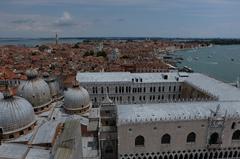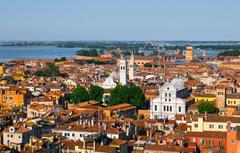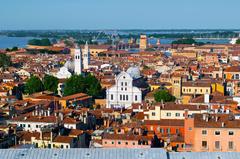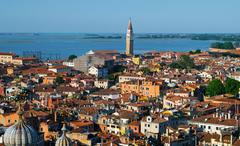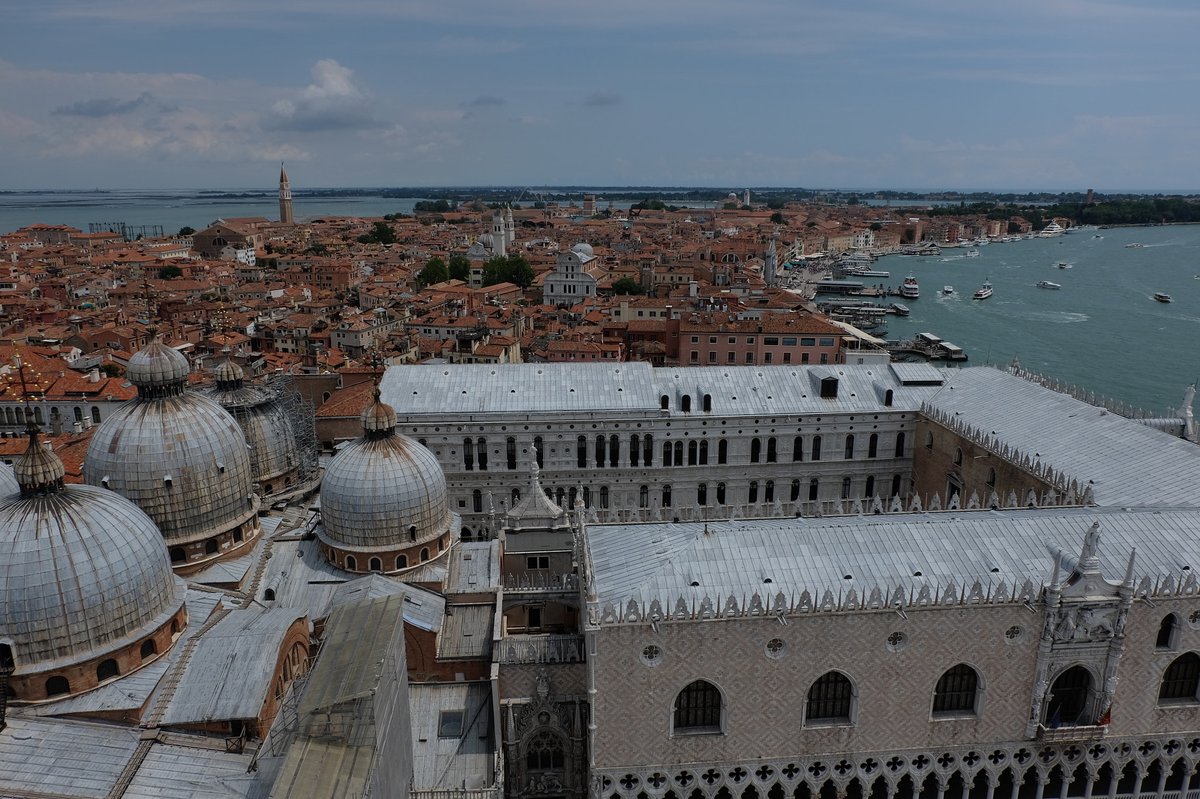
Castello Venice Italy: Visiting Hours, Tickets, and Historical Sites Guide
Date: 14/06/2025
Introduction: The History and Cultural Significance of Castello, Venice
Located in the eastern part of Venice, Castello is the city’s largest and oldest sestiere (district), renowned for its deep maritime heritage and authentic Venetian culture. With origins tracing back to the 6th and 7th centuries, Castello was the religious and political nucleus of Venice, anchored by the former cathedral Basilica di San Pietro di Castello and the monumental Venetian Arsenal—once the beating heart of Venice’s naval dominance. Today, Castello enchants visitors with its blend of Renaissance and Baroque architecture, vibrant local life, and a multicultural legacy shaped by centuries of trade and migration. From iconic churches and tranquil canals to world-class art events, Castello offers a multifaceted experience for travelers seeking both history and genuine Venetian traditions. For more details, consult sources like Images of Venice, Rough Guides, and Lions in the Piazza.
Table of Contents
- Introduction
- Early Origins and Etymology
- Medieval Development and the Rise of the Arsenale
- Religious and Civic Landmarks
- Multicultural Communities and Charitable Institutions
- Renaissance and Baroque Transformations
- Napoleonic and Modern Developments
- Visitor Tips: Hours, Tickets, Accessibility, and Tours
- Nearby Attractions
- FAQ
- Conclusion
- References
Early Origins and Etymology
Castello derives its name from a now-lost fortress (castello) on the island of San Pietro di Castello, previously known as Olivolo due to its olive trees (Images of Venice). The area’s earliest settlements date to the 6th and 7th centuries, established by refugees escaping the mainland’s invasions. According to local legend, San Magno founded several of Castello’s earliest churches around 650 CE (Lions in the Piazza).
Medieval Development and the Rise of the Arsenale
By the 12th century, Castello had become the epicenter of Venetian power through the establishment of the Arsenale in 1104 (Rough Guides). This vast shipyard—at its height employing up to 16,000 workers—was famed for its assembly-line production, capable of launching up to 50 ships per month. The Arsenale’s innovation was so legendary that Dante referenced it in the “Inferno.” Today, its historic halls and docks host major cultural events, most notably the Venice Biennale.
Visitor Information:
- Access: The Arsenale is open to the public primarily during Biennale exhibitions (May–November); check official websites for details.
- Tickets: Prices vary by event; advance booking is recommended.
Religious and Civic Landmarks
Basilica di San Pietro di Castello
Once the cathedral of Venice (until 1807), this basilica features a Palladian façade and early Christian relics.
- Hours: Daily, 9:00 AM–5:00 PM
- Tickets: Free entry
Santi Giovanni e Paolo (San Zanipolo)
A vast Gothic church and pantheon for 25 Venetian doges, with masterpieces by Bellini, Lotto, and Veronese.
- Hours: 9:30 AM–6:00 PM
- Tickets: ~€5; guided tours available
San Giorgio dei Greci
Built by Venice’s historic Greek community, this church is famed for its leaning bell tower and domed nave.
- Hours: Limited; check locally
Multicultural Communities and Charitable Institutions
Castello’s Riva degli Schiavoni waterfront was historically home to Balkan and Greek immigrants, enriching the area’s culture (Lions in the Piazza). The Scuola Grande di San Giorgio degli Schiavoni, adorned with Carpaccio’s paintings, celebrates this multicultural spirit.
Renaissance and Baroque Transformations
Notable architects like Palladio and Sansovino left their mark, with outstanding examples including the 1568 façade of San Pietro di Castello and the Baroque Ospedale della Pietà—famed for its association with composer Antonio Vivaldi (Lions in the Piazza).
Napoleonic and Modern Developments
Napoleon’s rule in 1797 brought secularization and urban renewal, most notably the creation of the Giardini Pubblici (Public Gardens), now the main venue for the Venice Biennale (Images of Venice). The area also features Via Garibaldi, a lively commercial street, and the Museo Storico Navale, preserving Venice’s naval history (Rough Guides).
Visitor Tips: Hours, Tickets, Accessibility, and Tours
- Access: Reachable on foot from San Marco or by vaporetto (water bus) lines 1, 4.1, and 4.2.
- Accessibility: Many attractions are wheelchair-friendly, though some historic sites may have steps.
- Tickets: Most churches are free or charge a modest fee (~€5). Biennale and museum tickets should be purchased in advance online.
- Tours: Guided walking tours are highly recommended for deeper context on Castello’s history and architecture.
- Events: The Venice Biennale (May–November) transforms Castello into a global arts hub.
- Etiquette: Dress modestly for churches and respect residential areas.
Nearby Attractions
- San Marco District: Visit St. Mark’s Basilica and Piazza San Marco.
- Cannaregio: Explore the historic Jewish Ghetto and scenic canals.
- Sant’Elena: Enjoy green parks and lagoon views at the city’s edge.
Frequently Asked Questions (FAQ)
Q: What are the main visiting hours for Castello’s landmarks?
A: Most churches and public spaces are open from 9:00 AM to 7:00 PM; hours can vary by season and event.
Q: Are tickets required for Castello attractions?
A: Many sites are free; museums and exhibitions may charge an entrance fee, especially during major events like the Biennale.
Q: Is Castello accessible for wheelchair users?
A: Major routes and some attractions are accessible, but bridges and older buildings may pose challenges.
Q: Are guided tours available?
A: Yes, many operators offer tours focusing on history, art, and architecture.
Q: How do I get to Castello?
A: By vaporetto (lines 1, 4.1, 4.2, 5.1) or a scenic walk from San Marco.
Everyday Life, Social Customs, and Local Culture
Castello retains a strong community identity, with locals gathering in campi (squares) like Campo San Pietro di Castello and Campo Bandiera e Moro. Daily life revolves around neighborhood markets, traditional bacari (wine bars), and communal festivals such as the Festa di San Pietro and Festa della Sensa (Italy Tourist Information). The sestiere’s artisanal workshops along quiet canals, especially for boatbuilding and mask-making, are a testament to Venice’s enduring crafts (Gamin Traveler).
Culinary traditions include seafood specialties like sarde in saor and risotto al nero di seppia, with local bacari serving cicchetti and ombra (wine). Social etiquette values politeness, quiet conversation, and respect for local customs—especially regarding dress and photography in religious or private spaces.
Annual Events and Festivals
- Venice Biennale: May–November, with exhibitions in the Arsenale and Giardini.
- Festa di San Pietro: Late June, featuring processions, communal meals, and music.
- Festa della Sensa: Celebrates Venice’s symbolic marriage to the sea with ceremonies and regattas.
Practical Tips
- Check official websites for up-to-date hours and ticket information.
- Support local businesses: Shop and dine at family-run establishments.
- Use public fountains (fontanelle) for water.
- Participate respectfully in festivals and community life.
Visual Highlights
- Riva degli Schiavoni: Panoramic lagoon views and stunning photo ops.
- Campo Santi Giovanni e Paolo: Bustling square with historic landmarks.
- Fondamenta delle Cappuccine: Picturesque canals and artisan workshops.



Summary and Planning Tips
Castello stands as a testament to Venice’s complex history, from its early settlements to its naval dominance and multicultural legacy. The district’s unique atmosphere is enriched by Renaissance and Baroque architecture, vibrant festivals, and everyday Venetian life. Practical information on opening hours, ticketing, accessibility, and tours helps visitors plan a rewarding experience. Embrace Castello’s slower rhythm, savor local cuisine, and discover hidden corners for a truly memorable Venetian adventure.
Ready to explore Castello?
Download the Audiala app for guided audio tours, follow us on social media for updates, and consult trusted sources for the latest on Castello’s attractions and events.
References
- Castello Venice: A Visitor’s Guide to History, Culture, and Practical Tips
- Exploring Castello: Visiting Hours, Tickets, and Historical Sites in Venice’s Oldest District
- Rough Guides: Venice Overview
- Italy Tourist Information
- Gamin Traveler
